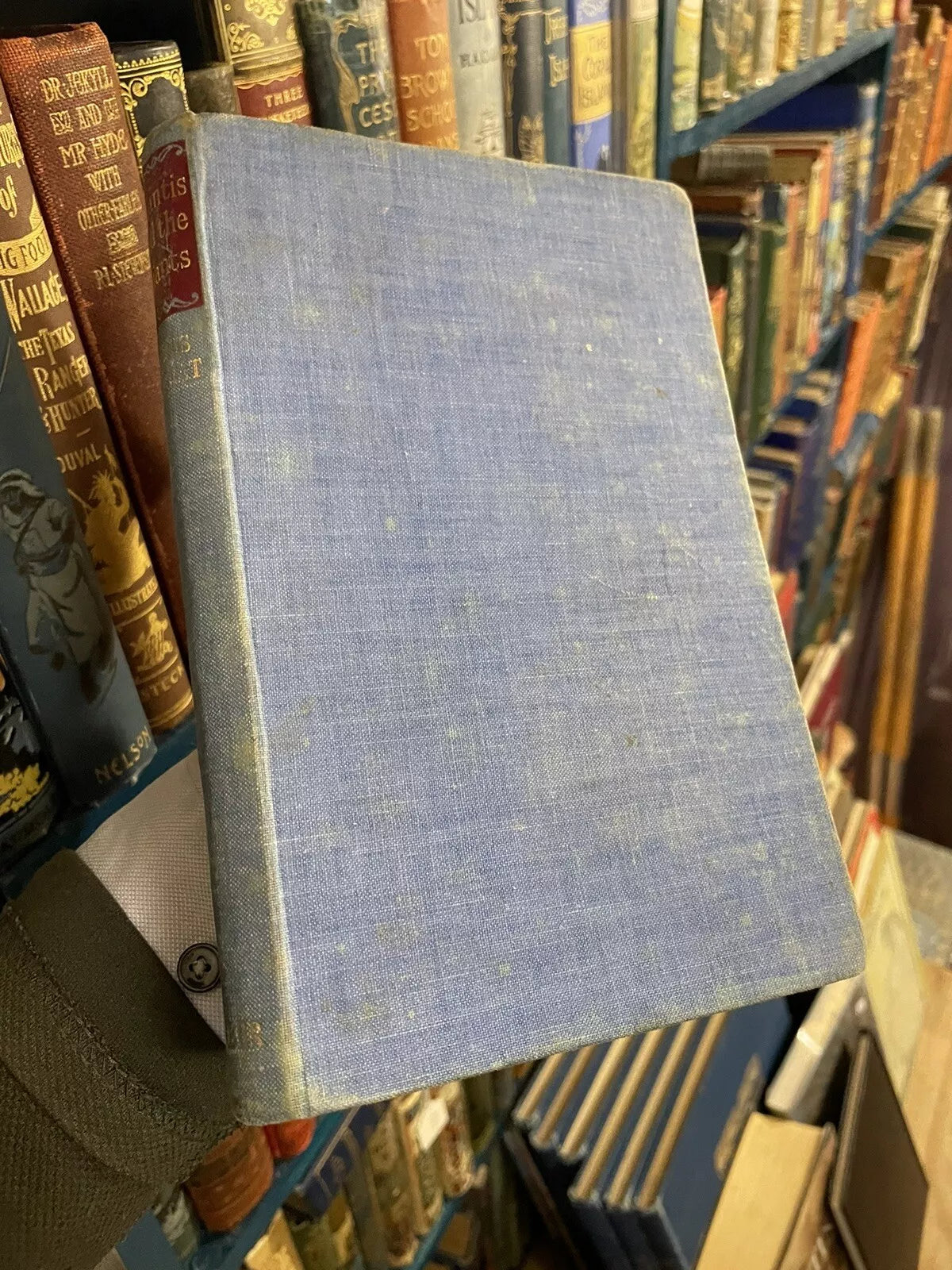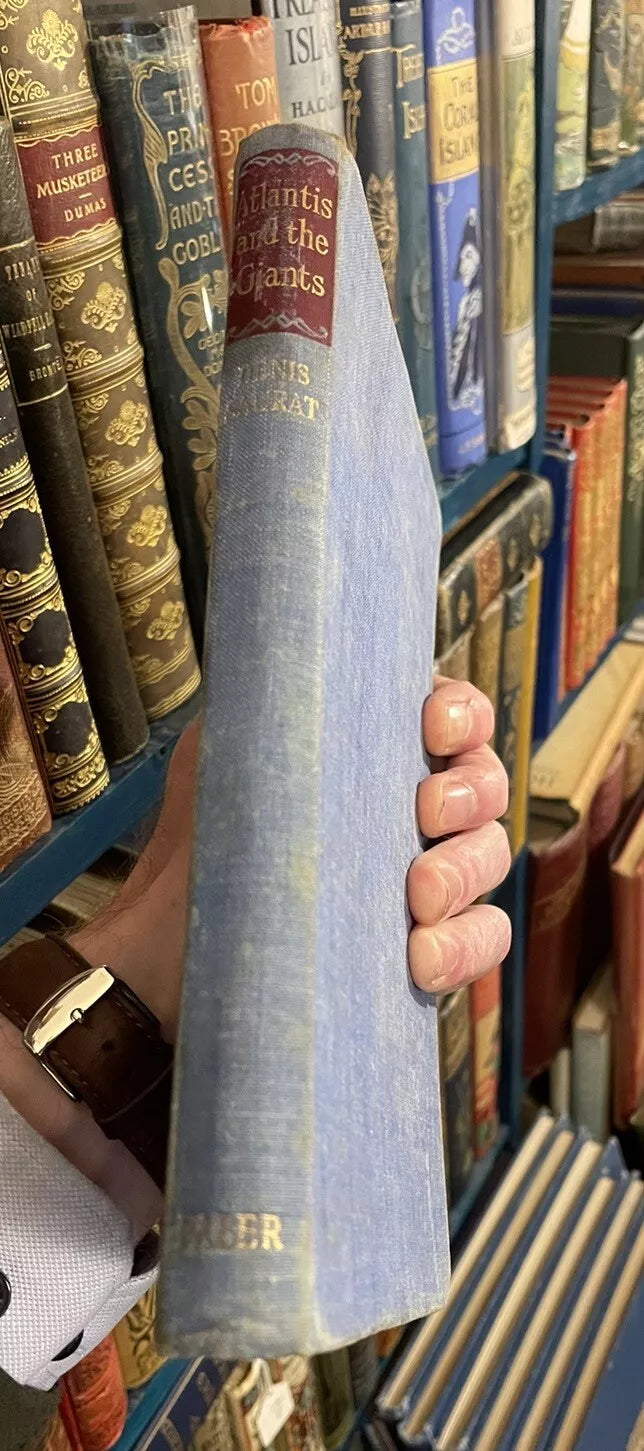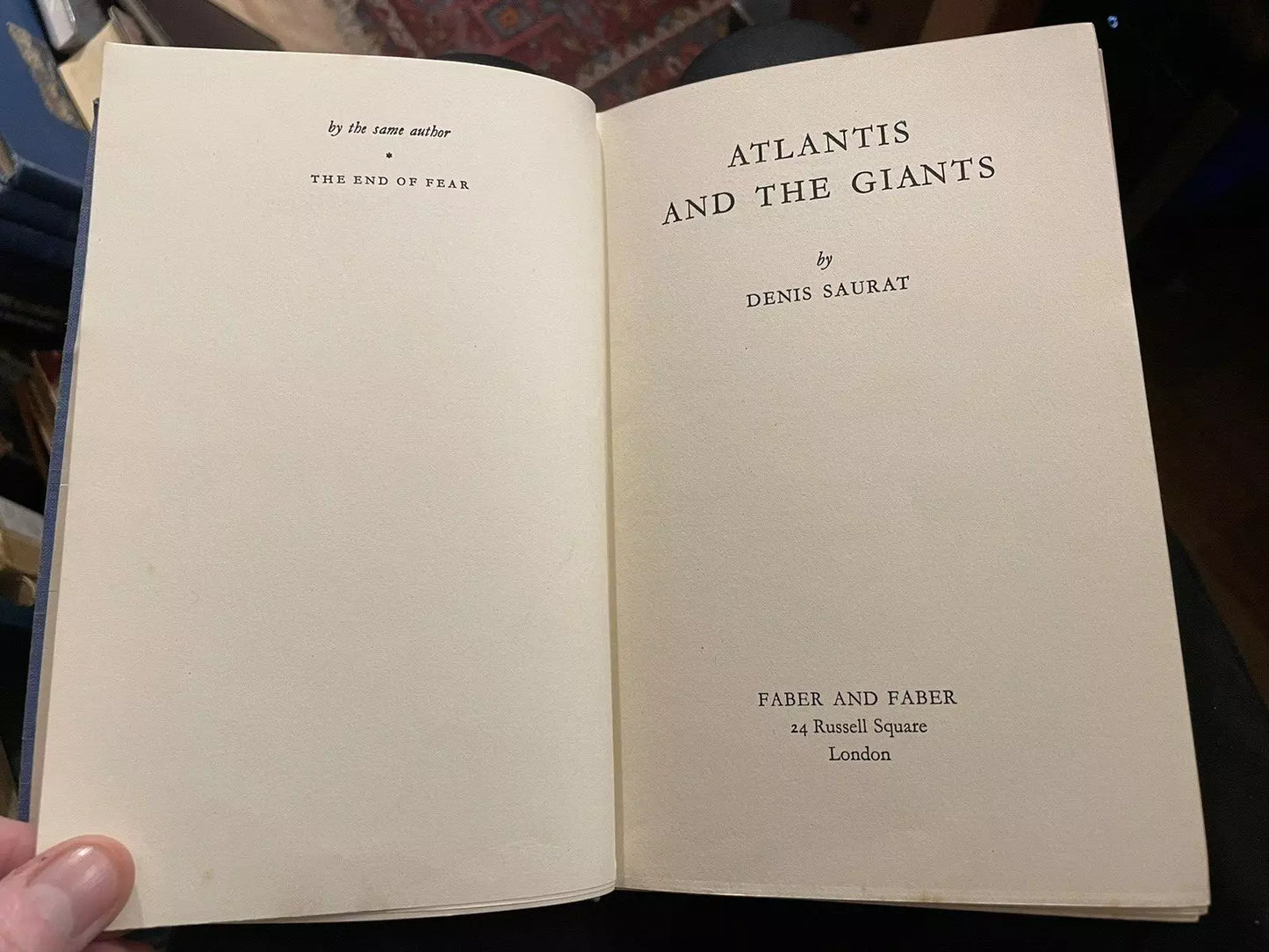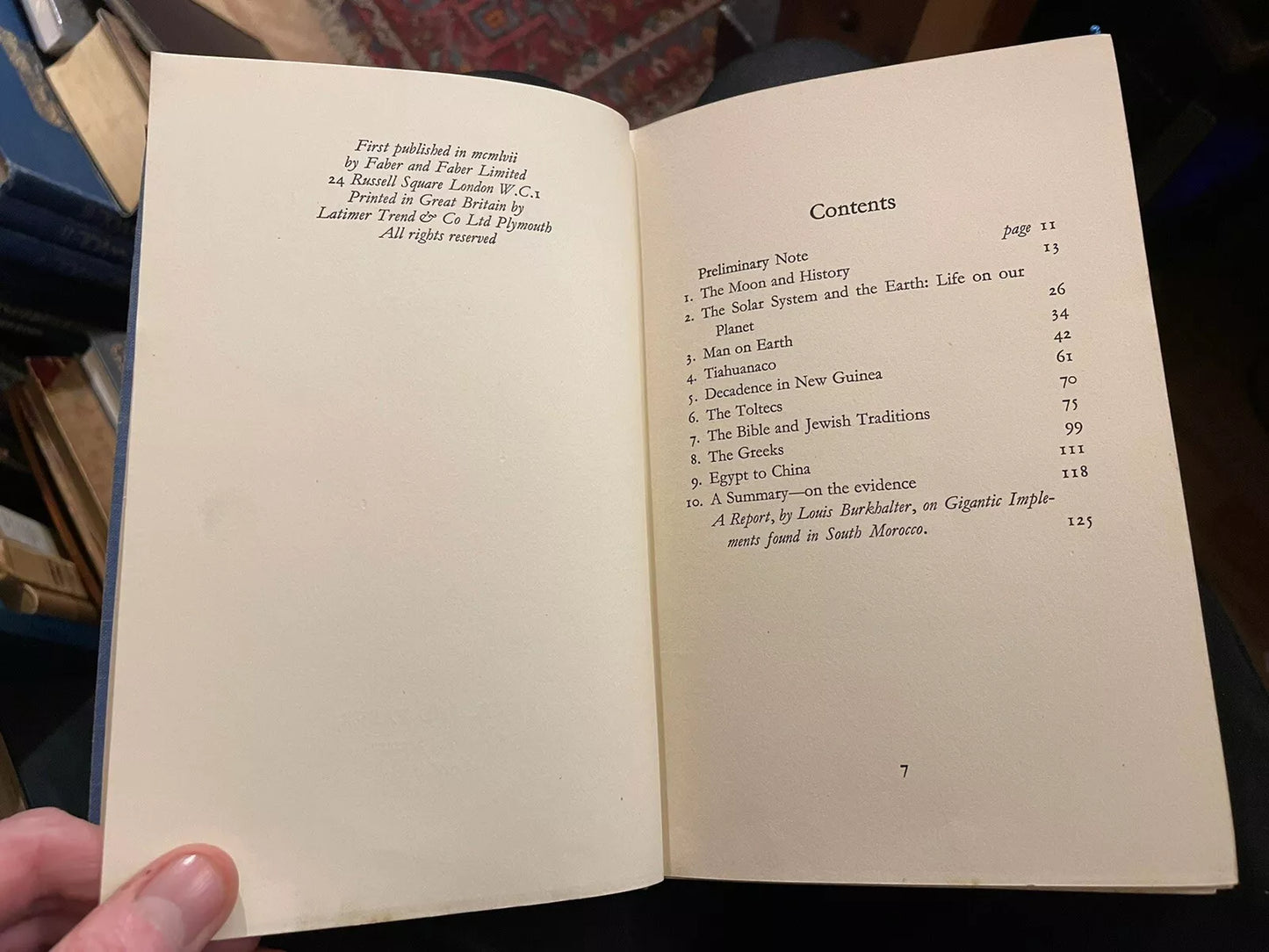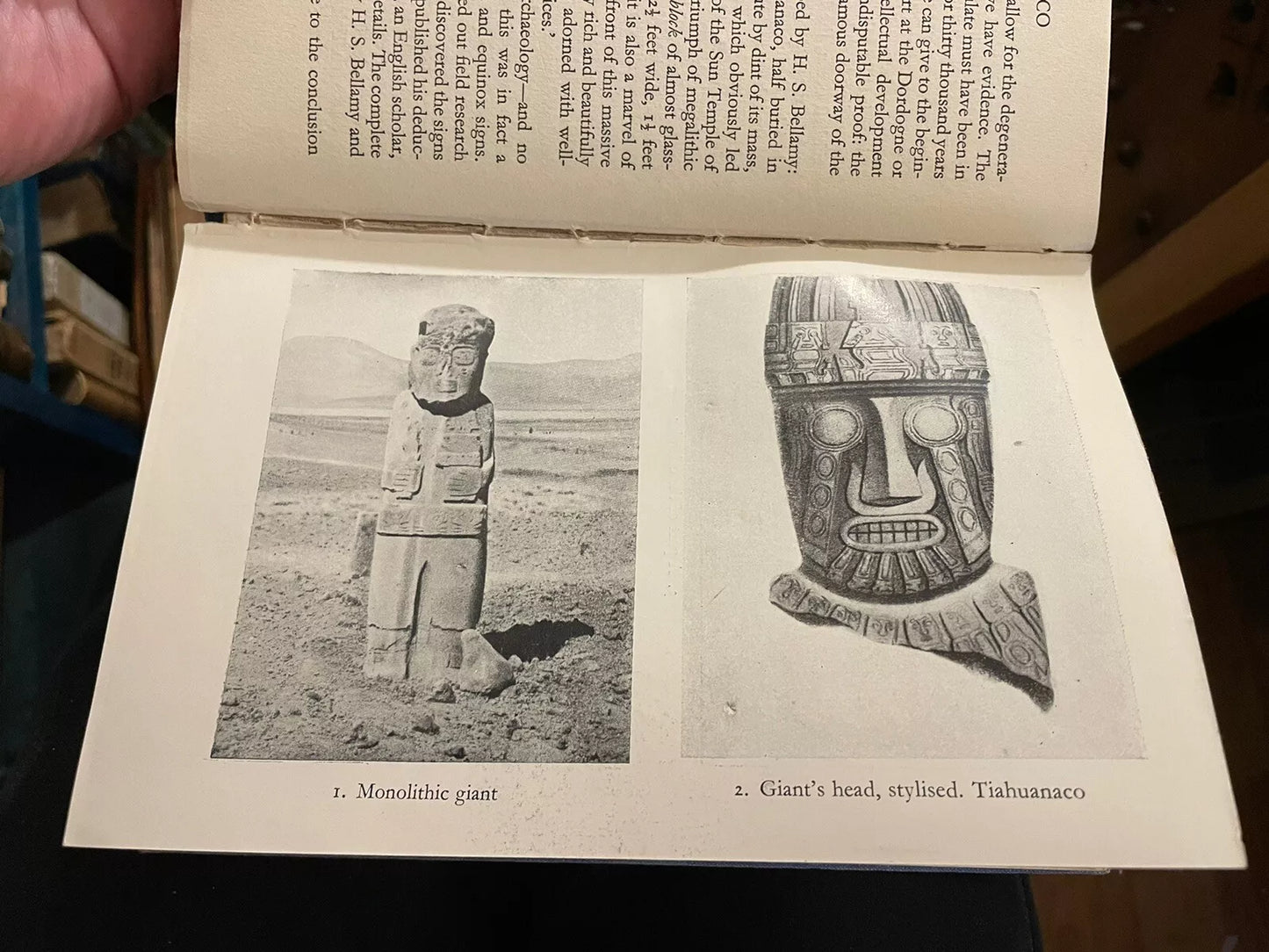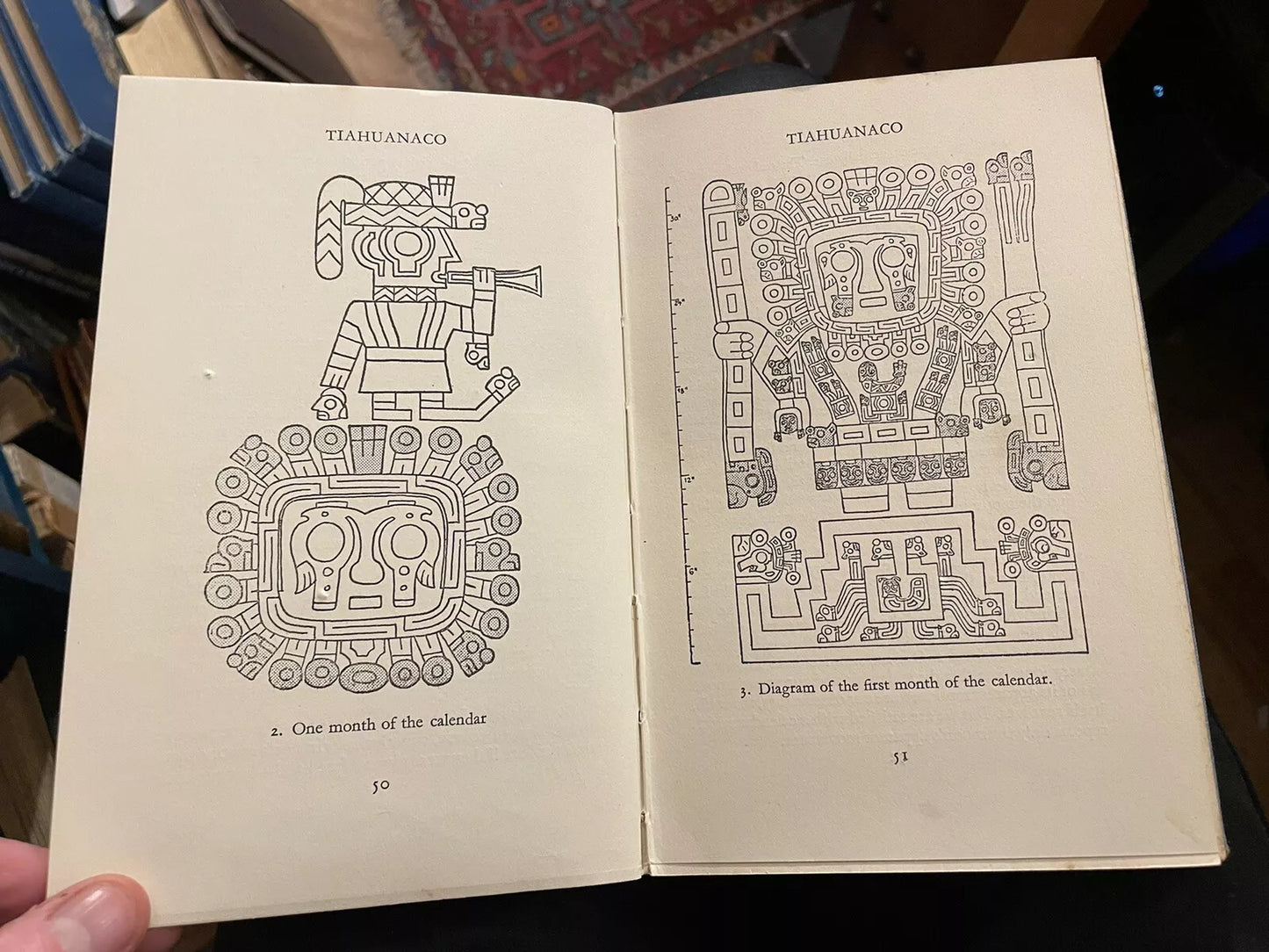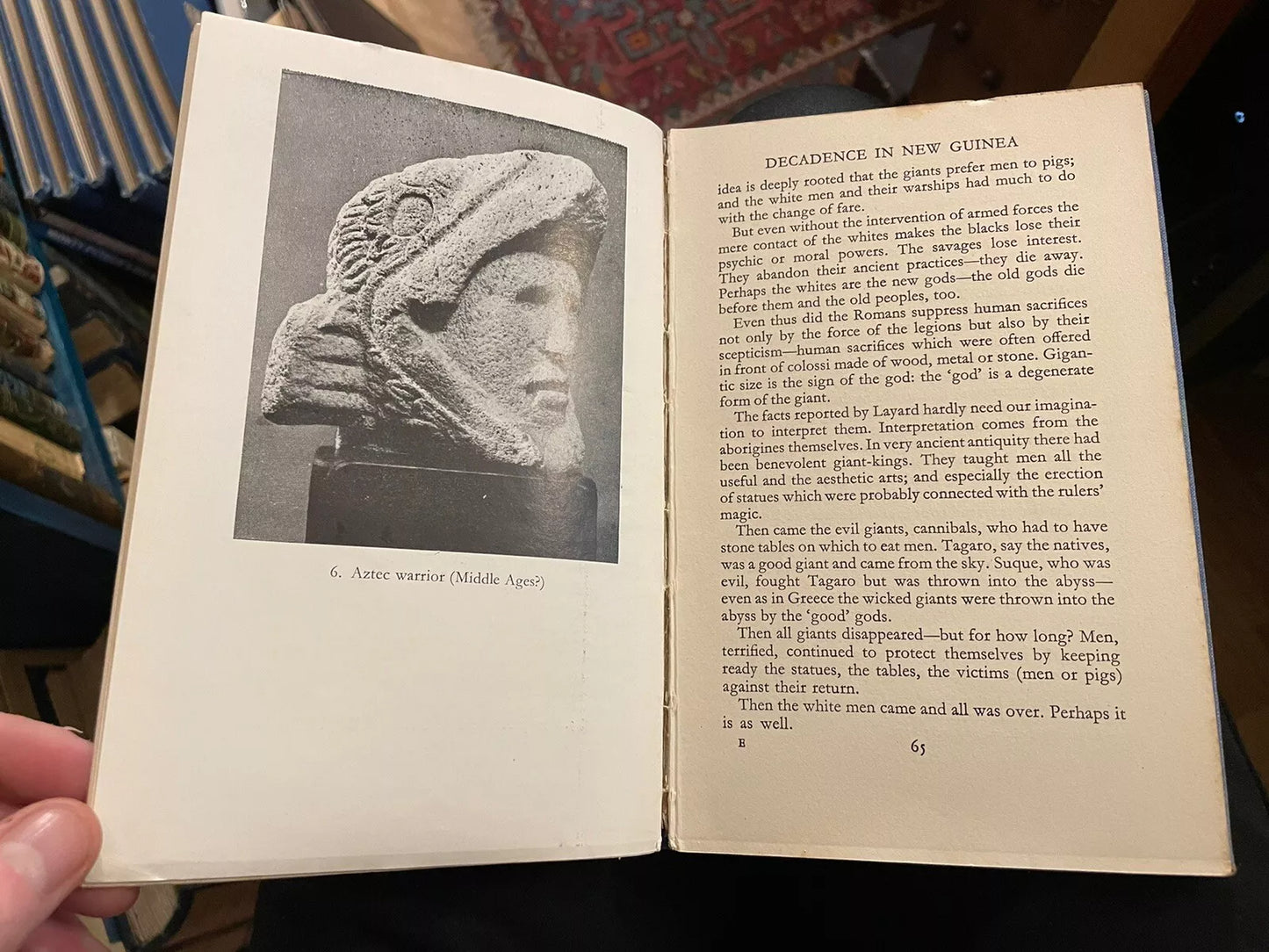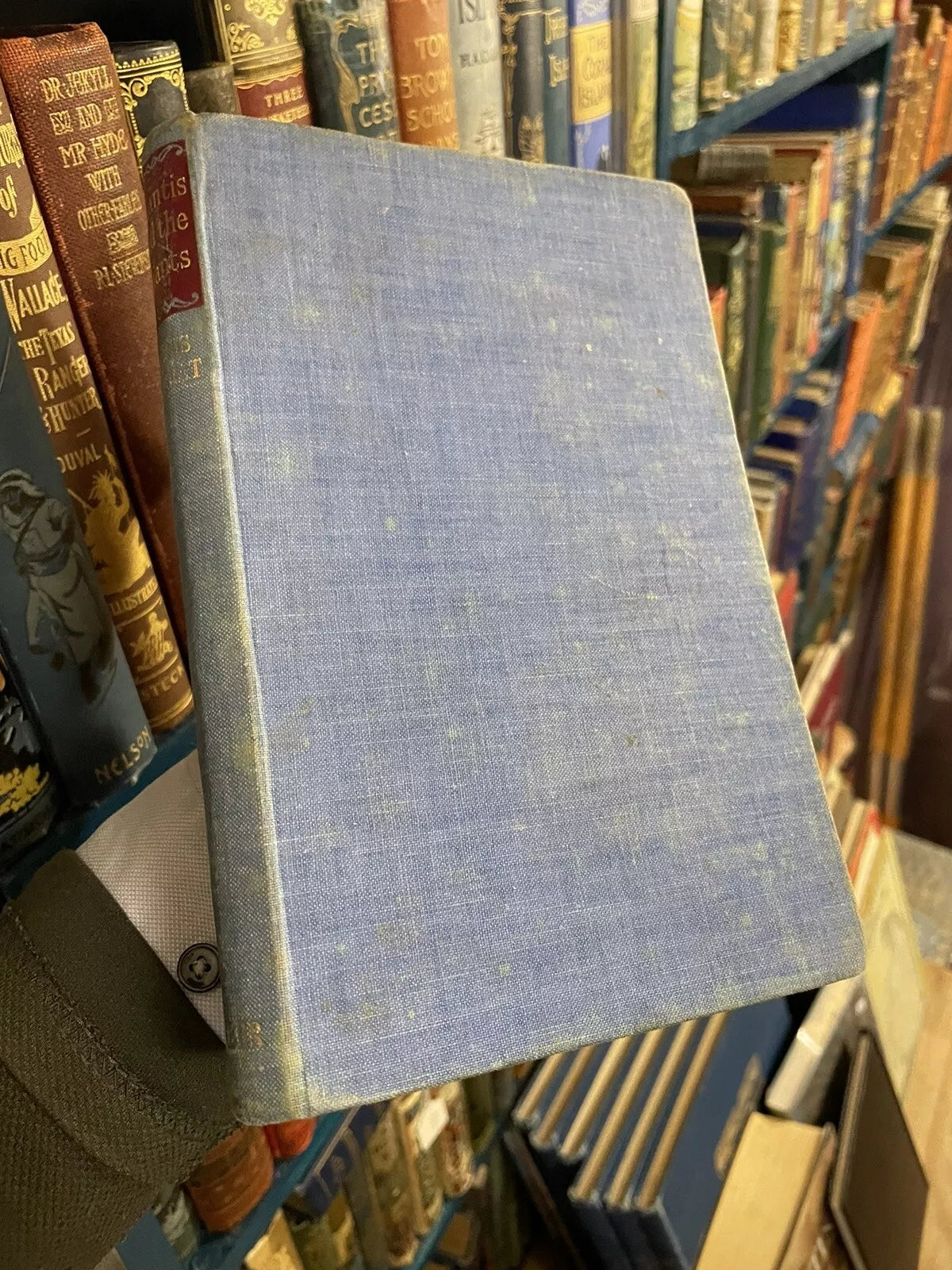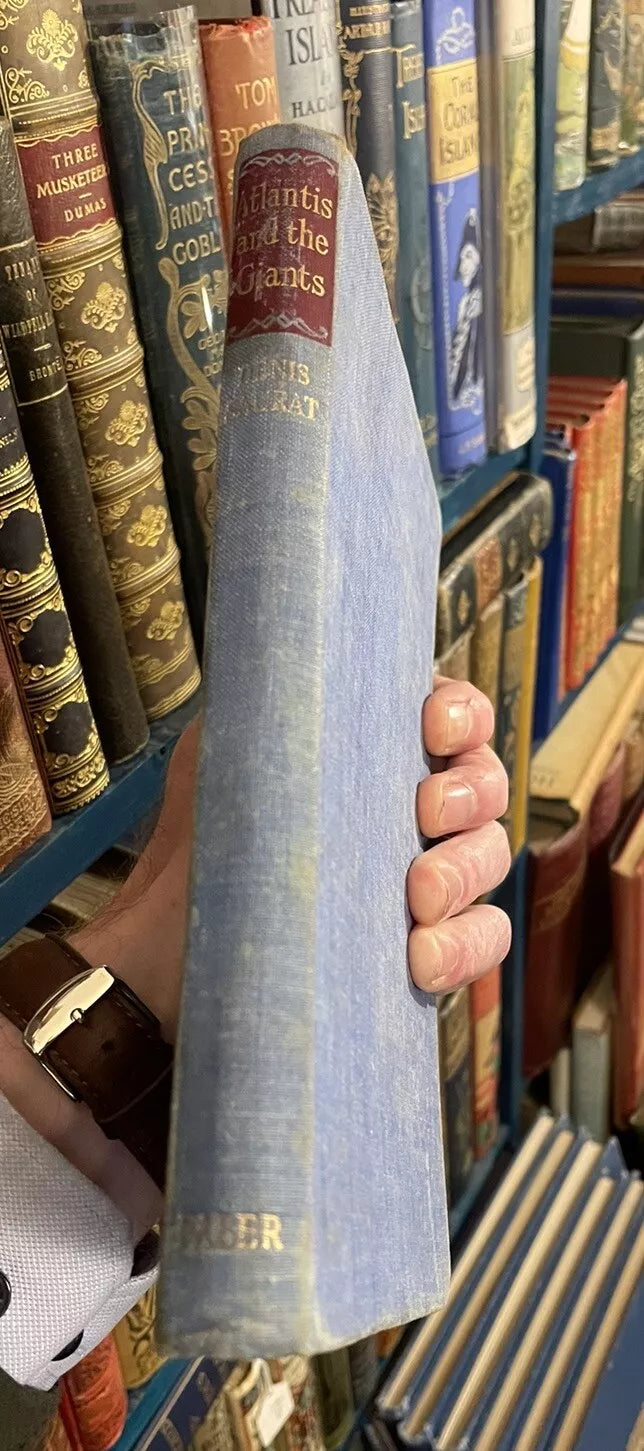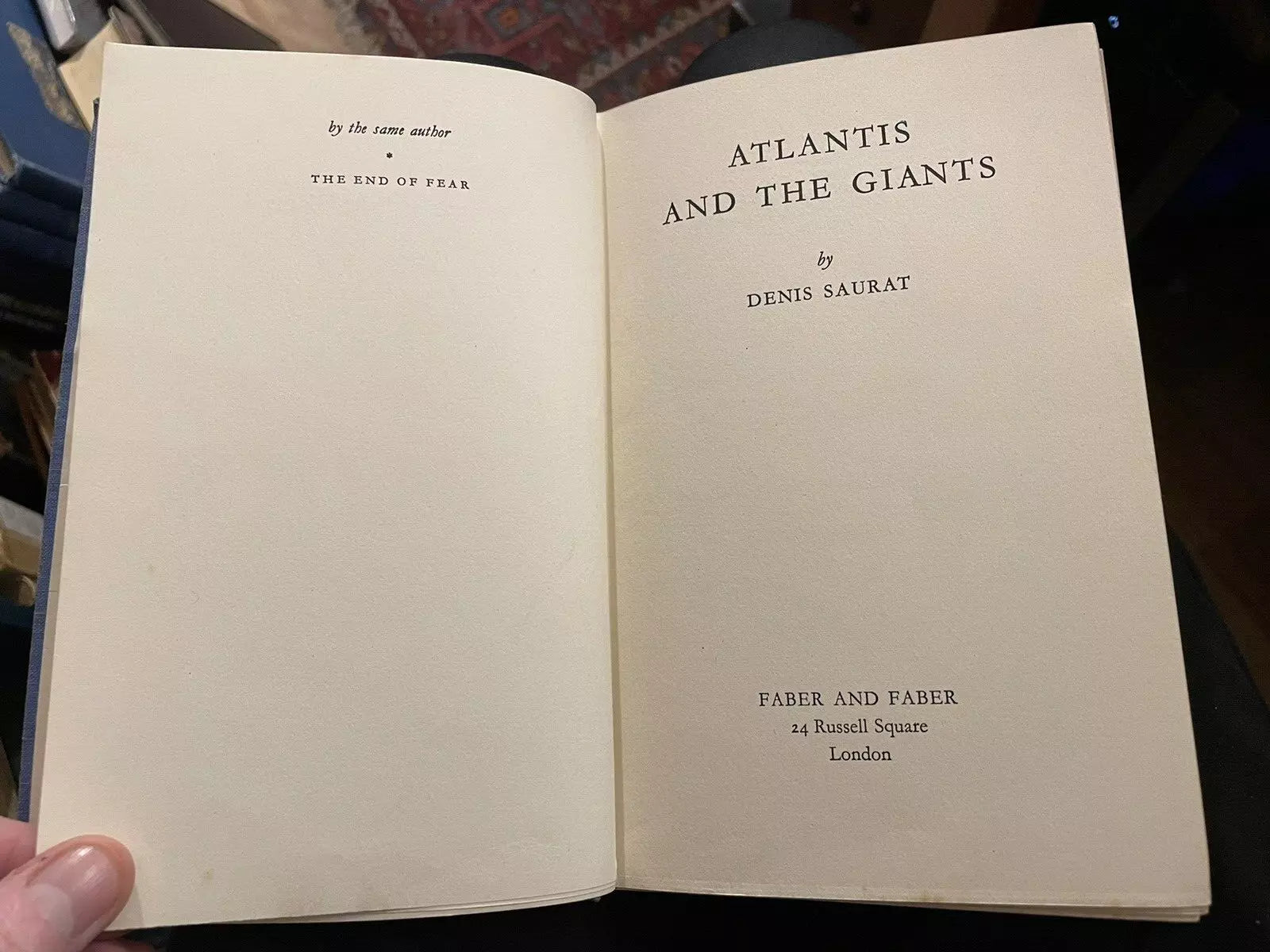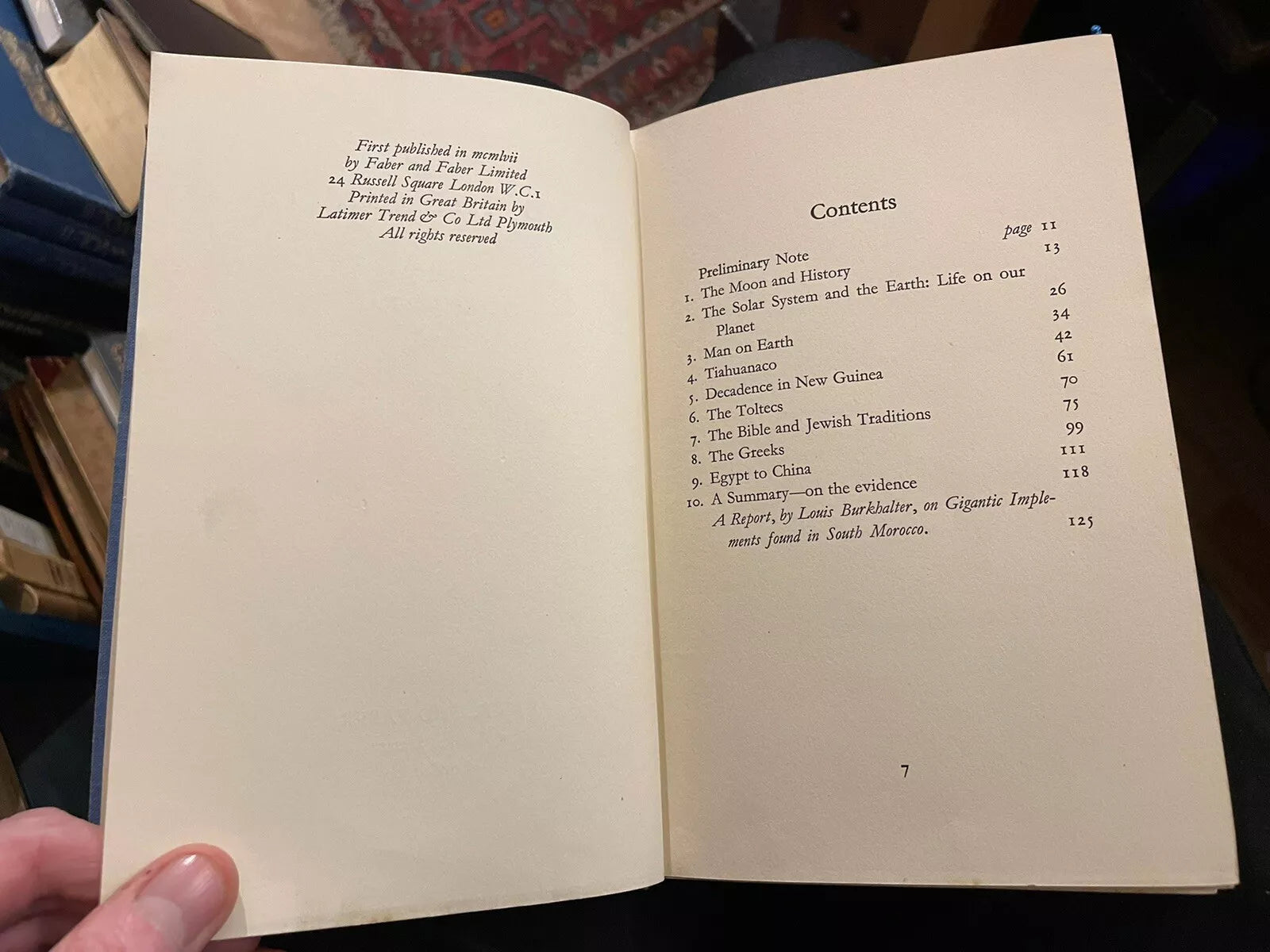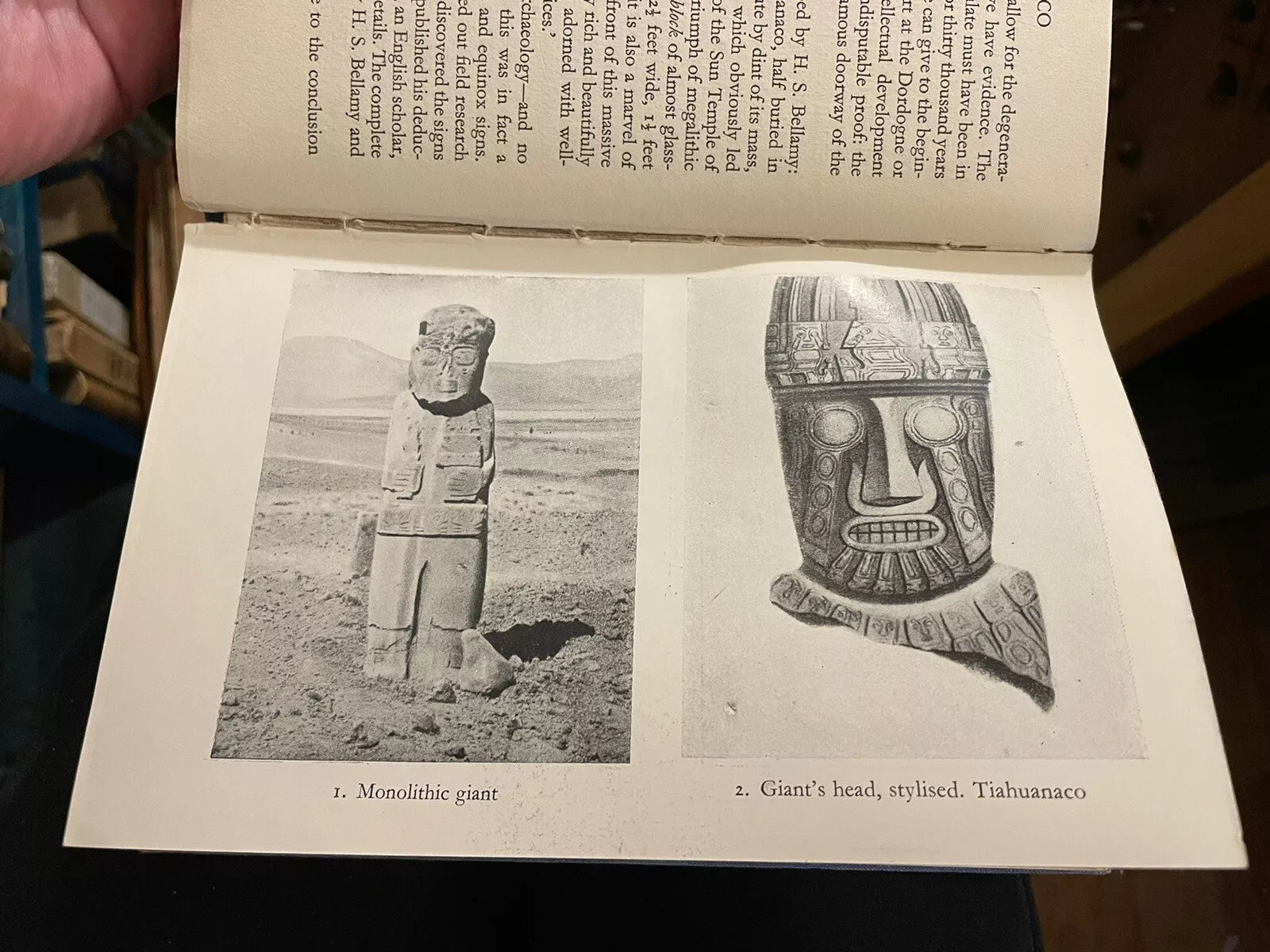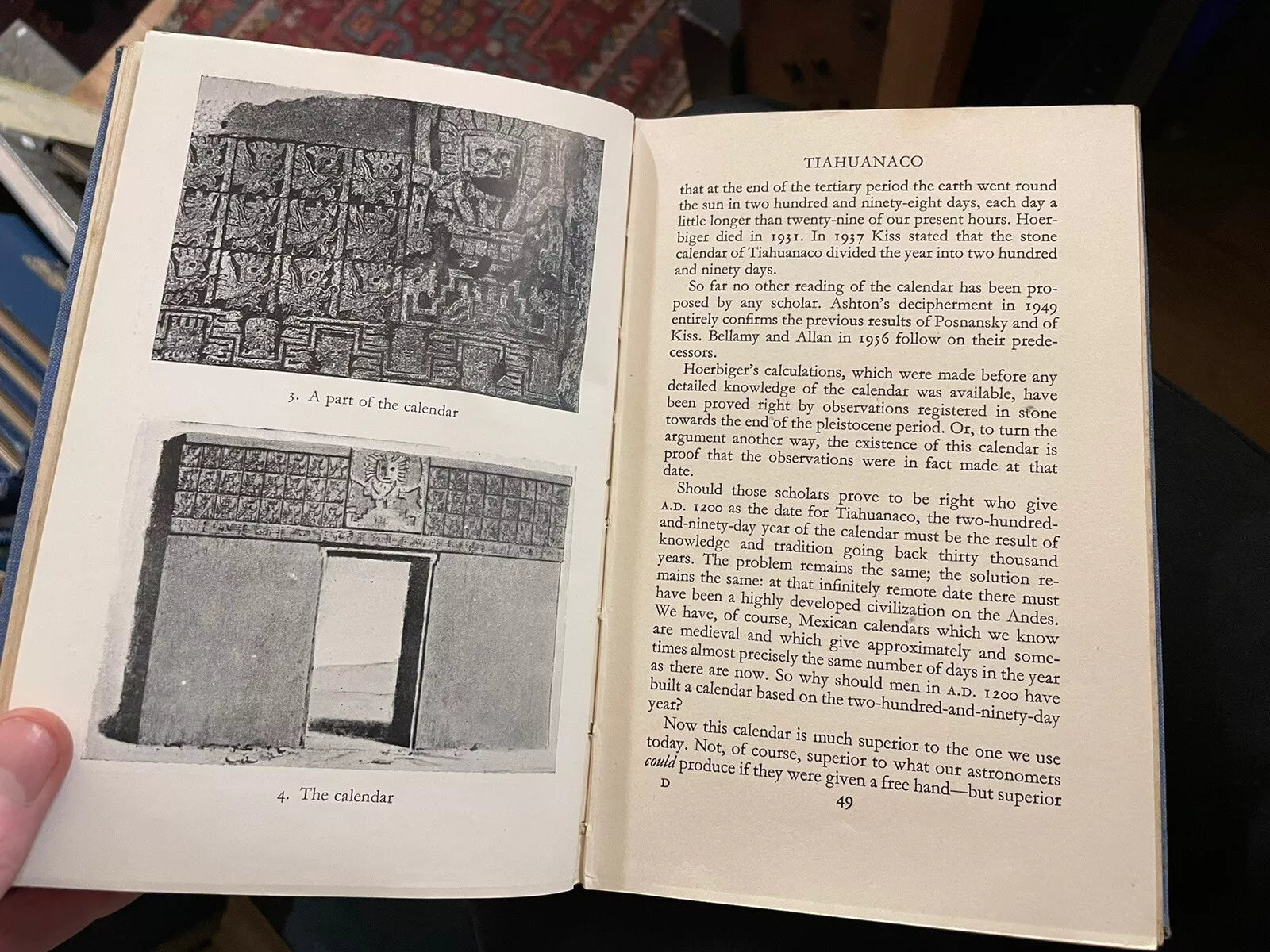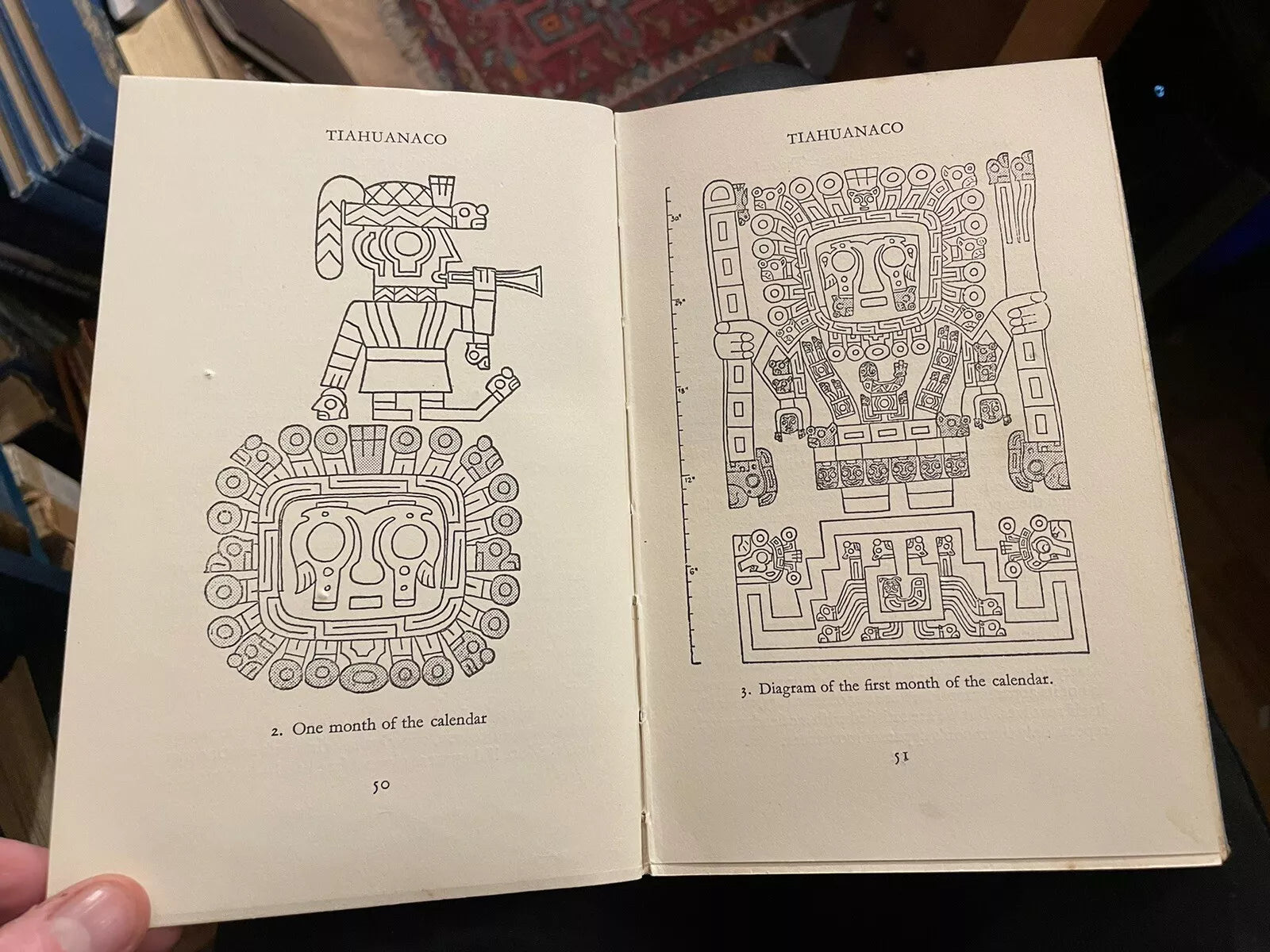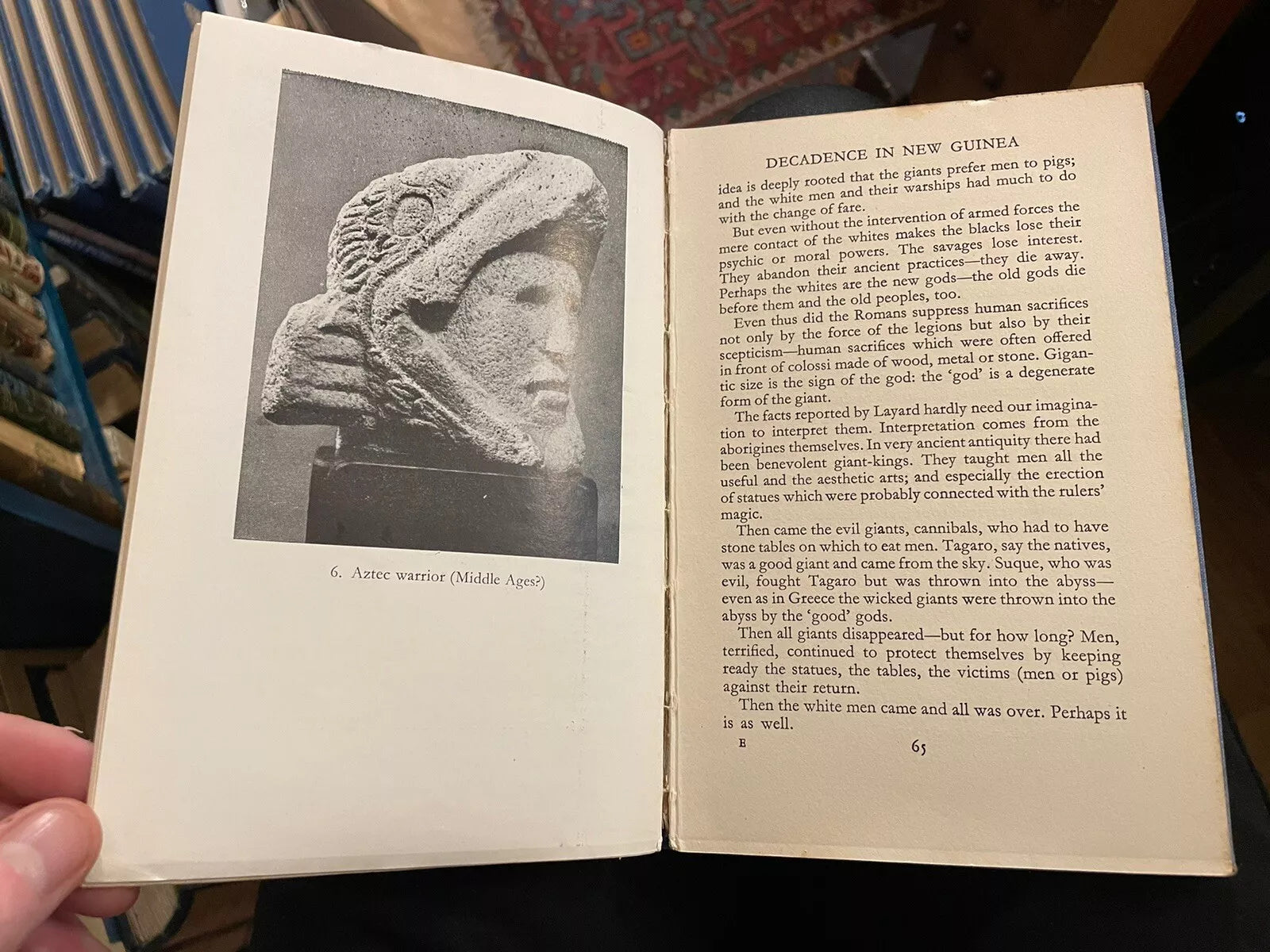The Gently Mad Book Shop
Atlantis and the Giants : Tiwanaku : Myth & Legend : Denis Saurat 1957
Atlantis and the Giants : Tiwanaku : Myth & Legend : Denis Saurat 1957
Couldn't load pickup availability
Atlantis and the Giants
By Denis Saurat
Published by Faber and Faber, London, 1957. First English Transaltion. Hardback, blue cloth, 8vo, 128 pages. Illustrated.
CONDITION
A good copy. No dust jacket. Cloth binding shows signs of age. Name to front endpaper. Pages good throughout. Overall a good copy of this scarce title.
Atlantis and the Giants centers on the reign of the Giants, which Saurat takes to be the older and more powerful race of humans who preceded us. They lived on the standard lost continents like Atlantis and Mu, and the previous ice-covered moon that once orbited the Earth was responsible for destroying their civilization when it crashed into the Earth. This (but of course) was remembered only in myth and legend, and preserved, as the author notes, in Genesis 6:4, the famous passage about the Nephilim, who were destroyed in the Flood. Saurat places a great deal of weight on Tiwanaku because he takes the eight-foot tall stone idols there to be life-size representations of the Giants, and he repeats the standard fringe history claims about how the large stones used to build it and nearby Puma Punku could have been moved, though he answer the question with “Giants” rather than “aliens.” Like other fringe figures, he agrees that Tiwanaku was once a coastal capital. You see, one of the ice-moons was once quite close to the Earth, and its gravity lifted the tides up to 13,000 feet, until the ice-moon fell apart and left Atlantis (Tiwanaku) stranded.
He also claims that “Atlantis” and its outposts contained such large buildings because during the last era of any given moon, the change in gravity as it spirals toward the earth allows humans and animals to grow to enormous sizes due to gravitational acceleration being only about 5 m/s instead of the current 9.8 m/s. This works in combination with what he says are powerful “cosmic rays” that once bathed the earth in life-giving radiation. (Hey, it was the Atom Age!) Oh, and during the interregnum between moons the lack of lunar gravity counterbalancing Earth gravity promotes dwarves and elves due to stronger pull from the Earth. (Yes, I know this doesn’t make a lot of sense.) But wait, there’s more! The last giants, after the crash of the Third Moon, became degenerate and cannibalistic, and scared modern humans worshiped them and sacrificed to them to stay safe from the monsters they mistook for “gods.”
Denis Saurat was a French literary critic and philosopher. He wrote and broadcast on a wide range of topics, including French society and culture.
At the outbreak of WWI he was a reader in French at Glasgow University. After receiving a doctorate of the University of Bordeaux, and a lauréat des concours d'agrégation in 1919, he became associated with the Department of French at King's College London from 1920, where he was a professor from 1926. He was also director for many years of the French Institute of London.
The term "Scottish Renaissance" was brought into critical prominence by Saurat in his article Le Groupe de la Renaissance Écossaise, which was published in the Revue Anglo-Américaine in April 1924.
(Location : Blue Shelves 4, 5 up)
Share with someone
